Philippe Pastor: “Painting is a lifetime commitment”
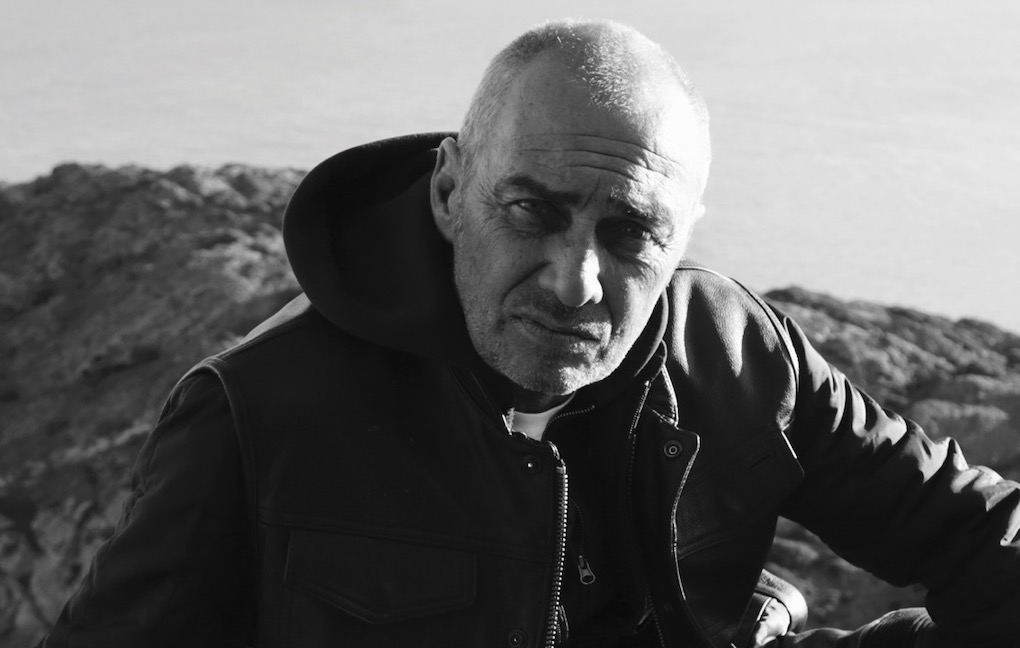
The Monegasque artist is very committed to the environmental cause, and is currently preparing an exhibition in Baux-de-Provence.
“My artistic journey? I’d need a couple of days to tell you about it!” Speaking from his workshop near Cadaquès, in sunny Spain, you can hear Philippe Pastor smile at the other end of the line.
The Monegasque artist did, however, share with us the most poignant memories from his career. Starting with his two participations in the Venice Biennale of Visual Arts, in 2007 and 2009. ” For the first one, the Riva Foundation for Modern Art asked me to contrast Eastern art and our Western art. I worked with two Syrian artists who exhibited on the ground floor, and I used part of an old disused church. And for the second Biennale, I brought three large paintings to Monaco, practically the size of the billboards you see at the roadside,” he says.
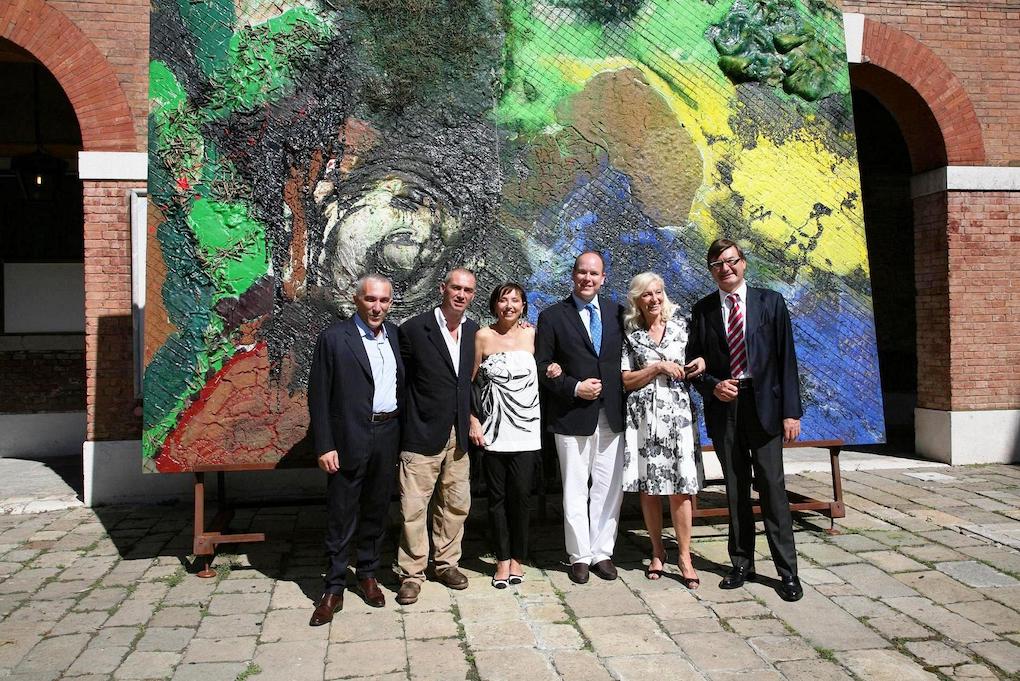
With his characteristic candour, Philippe Pastor adds: “I remember that, at the Biennale’s artists’ meeting, I was with the painter Miquel Barceló and the two of us got together because we were the only ones who had actually done paintings… The Venice Biennale is a Biennale for painting and sculpture, but now if you go you’ll see weird installations. There aren’t really any paintings or sculptures any more. It shows how art is changing, or how it is being allowed to change.”
Since I was little, when I look at colours I see things that other people don’t see
Six years after the second Biennale, the painter and sculptor was chosen to represent the Principality at the Universal Exhibition in Milan. Philippe Pastor was proud to display his famous burnt tree sculptures around the Monegasque Pavilion.
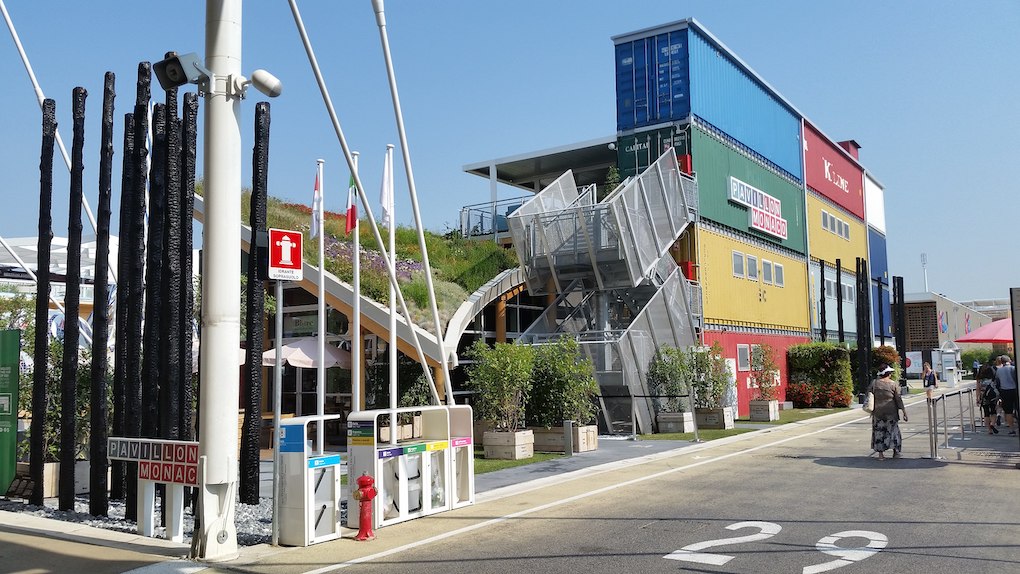
These sculptures were created after a disaster that had made an impression on the artist a few years earlier. “I was younger and I had a workshop in the forest, in La Garde-Freinet, in the Var. One year we had a much bigger fire than previously and, along with the boys who were working with me, we spent two days and two nights putting the fire out. The fire brigade asked us to leave, but we refused. We finally put out the fire and I saw some horrible things: I saw animals fleeing, everything was burned. So I thought: “You need to do something.” I got hold of some straight trees and took them to the workshop. I cleaned them up, kept the charred trunks, and leaned them against a wall… And the next morning, when I saw them lined up, with their shadows casting backwards, I filled the gaps with gouache paint. What is stronger than fire? Nothing. Fire is the worst thing,” he says.

Showing Nature’s plight to the world
More than a work of art, these trees have become symbols. Noticed by the United Nations, Philippe Pastor has exhibited his trees on several occasions, as part of the United Nations Environment Programme. “This is the most important work to my mind,” he says. “I have done a lot of installations with the United Nations, for conferences in Singapore, New York, Monaco… I was the one who introduced the members of the United Nations to the Prince Albert II Foundation and to the Prince.”
Founder of the Art & Environnement non-profit, Philippe Pastor uses his art “to show the plight of Nature and our society to the world.” With series entitled “The End of the World”, “Over Time” and “H2O”, the artist commits harsh reality to canvas and warns of the absolute need to preserve natural resources.
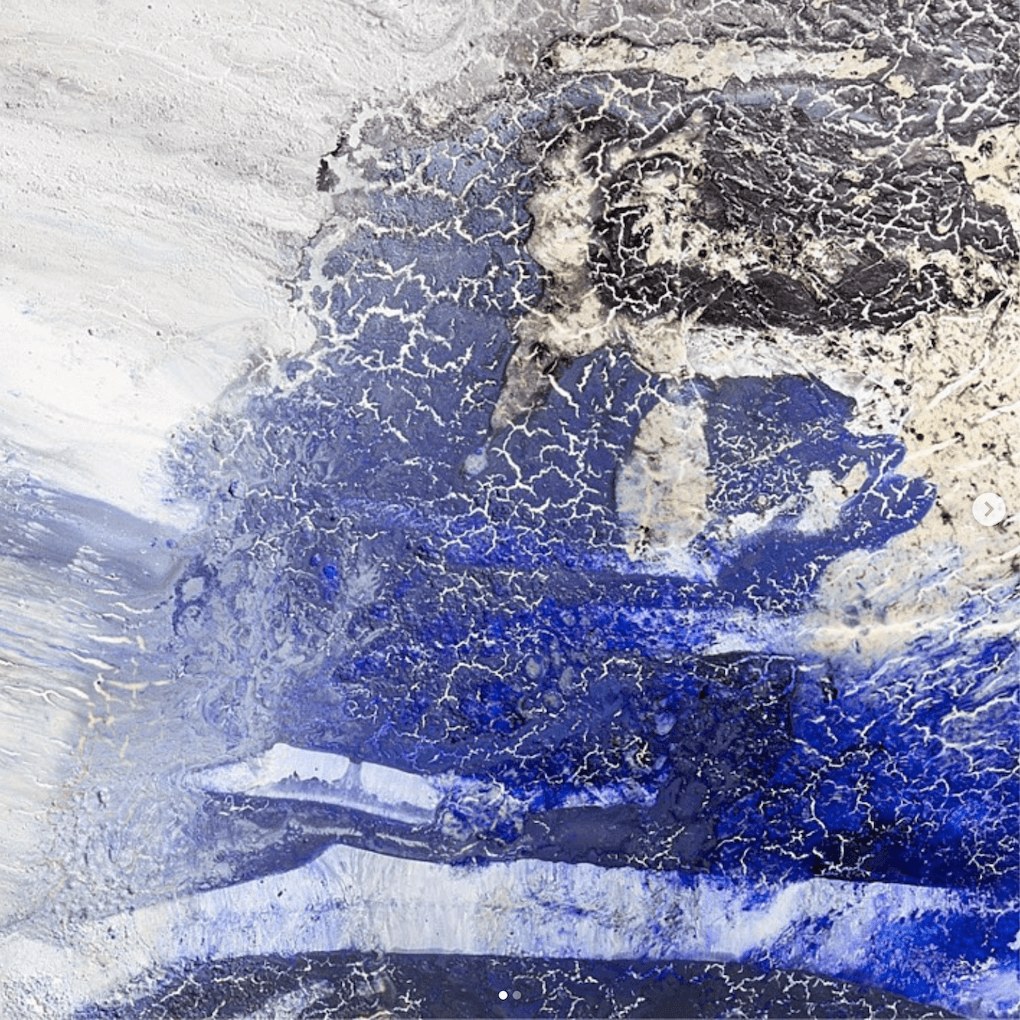
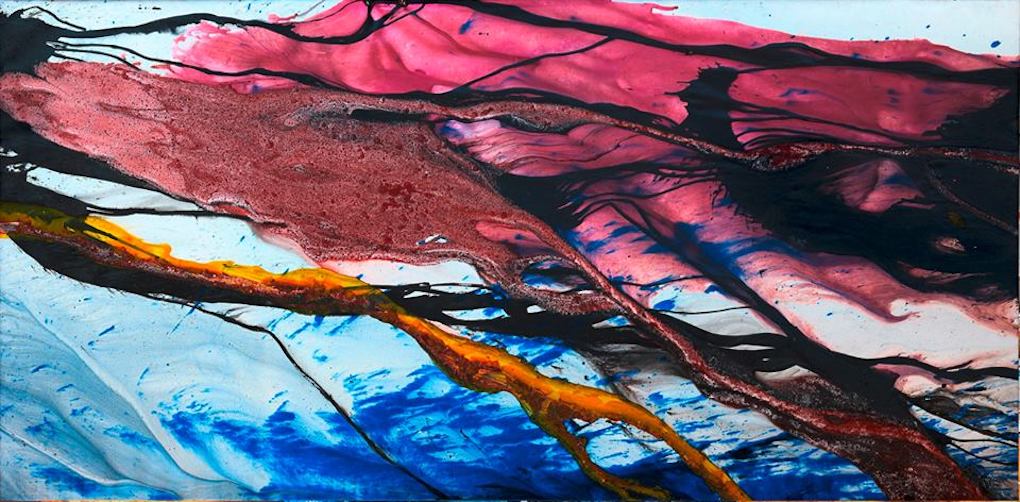
“Of course, if the world were more beautiful, I’d paint more beautiful things. But we have to accept that we have taken the world to the brink of disaster. The big oil companies were all warned in the 1970s that the fuel we were using was very bad for us and for the ozone layer. A lot of time has gone by since then! (…) We’re sinking further and further into the mire every day, with our eyes shut. We pretend not to see, we don’t WANT to see. Everyone knows that the situation is very very bad. Everyone knows that there is a huge water shortage on Earth. But we pretend that everything is fine. Everyone knows that electric cars are not the solution. But we just pretend, because it keeps businesses going,” explains the artist, who makes no secret of his anger at the lack of action.
“The world is falling apart and we’re still trampling it underfoot,” he says. “These days, it’s all about money, money, money. We’ve already gained almost two degrees. By 2025, it could be three. (…) I’m 63 and I think I’ll see how it all turns out. But it’ll be terrible for the children. What are we going to leave them? There will be no more forests, no more water! Painting flowers is all very well, but I’m outraged by everything that’s going on today. I’m even more outraged by all the people who have loads of money and aren’t giving anything back, who are doing nothing to bring about change. They look ever more gorgeous, drive ever bigger cars, eat in ever bigger restaurants. What for? To get noticed. They know that the world is in a bad way and they’re doing nothing about it. And they are probably the ones who will end up best off.”
And despite the measures taken by the Principality to reduce its environmental impact, Philippe Pastor is adamant that there must be an international response: “We should have a global body to manage this. There should be an environmental programme at least at the European level, with another in the United States, another in South America… That’s why we’re not getting anywhere: environmental issues don’t stop at borders. We have to stop fooling ourselves, lying to ourselves. We have to face reality. That’s what I paint.”
An instantly recognisable painting style
And Philippe Pastor paints practically every day from his workshops in Spain and Savoie: “I’ve been at this for thirty years, working all the time. Not out of passion, but out of conviction. Painting isn’t about buying a few brushes, getting a bit of paint on your fingers and imagining you’ve made it. Painting is a lifelong commitment. I don’t know how to do anything else. My hands are stained and damaged… If I go anywhere, I always have a notebook in my pocket. I love drawing people’s faces, but in my own way, the way I see them. As they really are. I exaggerate the features, the ears, the nose… Picasso was the master of all of that. You can say what you like about Picasso, but he was fantastic. He still is, in fact.”

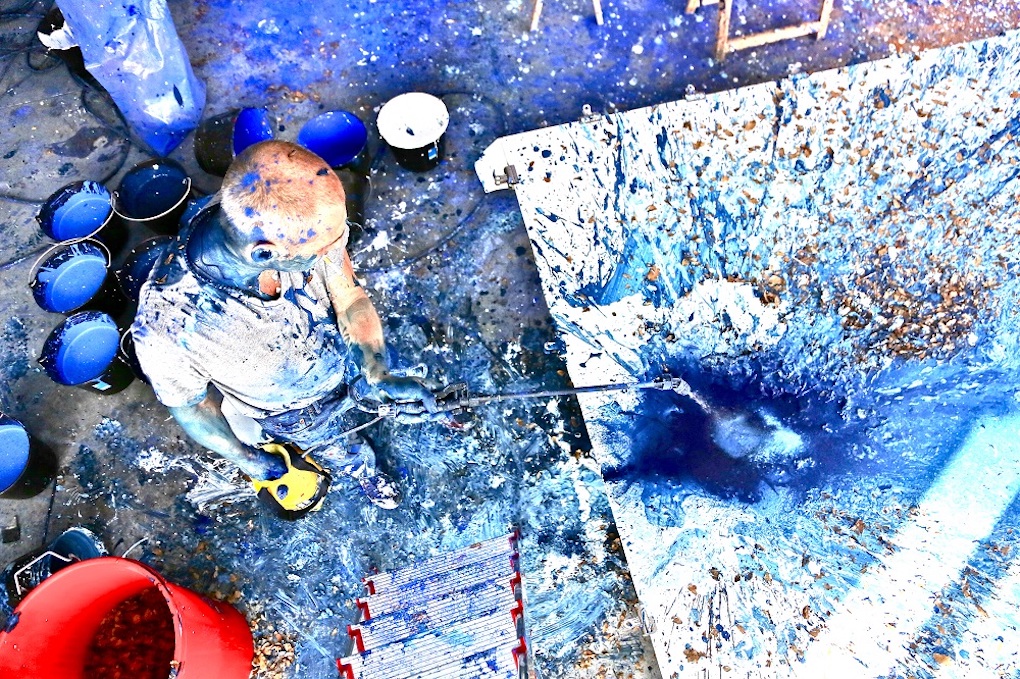
Once you start painting, you paint with your gut
The Monegasque artist shares one thing in common with his Spanish counterpart: far from being spontaneous, his work requires a great deal of thought beforehand. “But once you start painting, you paint with your gut. You never let go of your pencil, sometimes you even close your eyes. You’re not the one who’s making the picture any more: it’s everything you have put into it that does that. Don’t ask me how I make my paintings. It starts with a canvas, but I will already have worked on it for a fortnight, three weeks, a month… You develop habits with practice.”
And technique is not just about movement. After experimenting with watercolours as a child, then oil painting when he lived in Saint-Tropez, Philippe Pastor now makes a point of working with natural colours straight from Morocco or India, and which are sometimes hard to find. “It took me two years to find the technique for mixing the pigment with glue and water (…) You get black burnt wood pigments in Morocco. I wanted to paint with that. Today, I can make a painting that’s mine, that’s recognisable: you don’t need to look at the signature to know that I’m the artist,” he says.
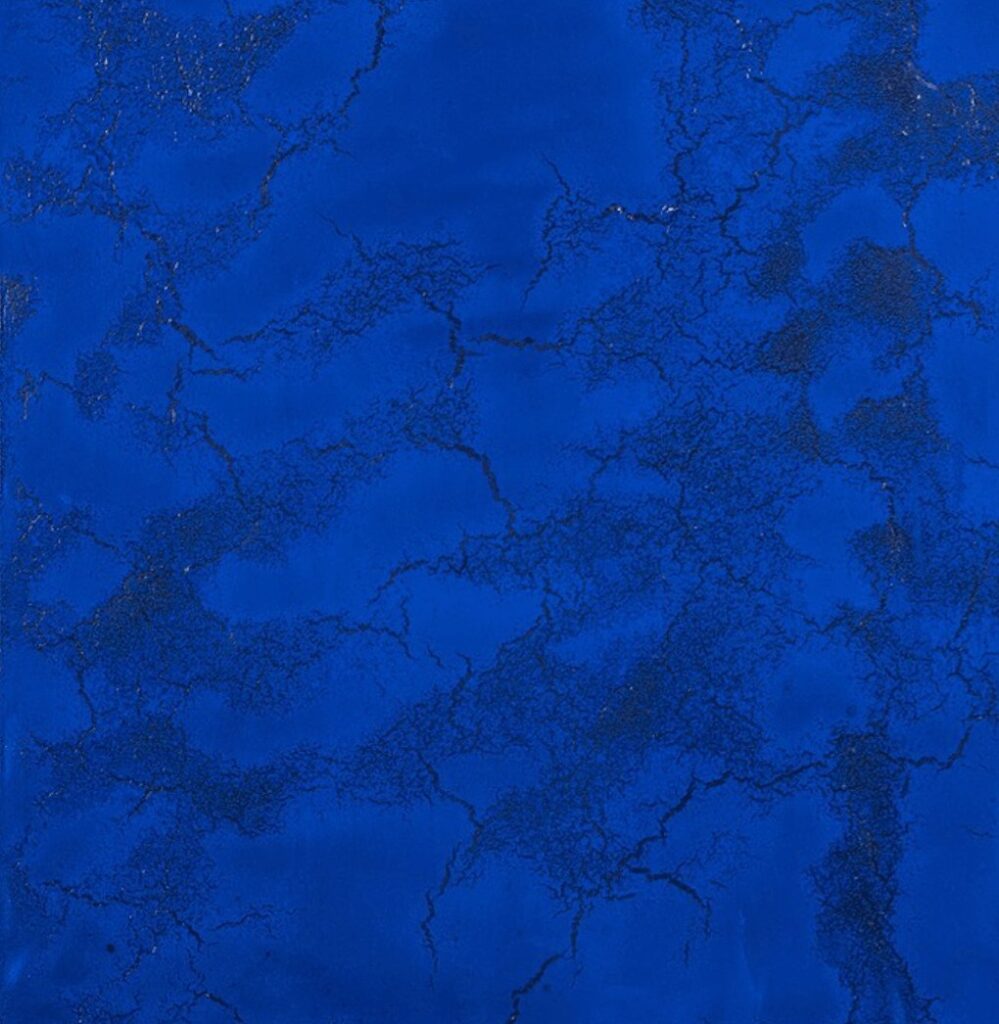
When it comes to inspiration, the artist draws from Nature, far from Monaco: “I don’t like cities, I like the countryside, walking with my dog… You find the paintings in the countryside.(…) I don’t know if I always knew I wanted to be an artist, but I can tell you one thing: ever since I was little, when I look at colours I see things that other people don’t see.”
Baux-de-Provence this summer
Having just returned from the prestigious BRAFA Belgian art fair, where he “went down a storm”, selling four paintings at the opening, the artist is now actively preparing his forthcoming exhibitions around the world. From Hong Kong to Belgium by way of Paris, it’s a packed schedule.
But the exhibition he is most looking forward to is much closer to the Principality. From 1 June until 30 September, Philippe Pastor will be exhibiting his work in Les Baux-de-Provence, in the heart of the village. “Every year, I exhibit in a small town on the Côte d’Azur. Last year it was Saint-Paul-de-Vence; three years ago it was Bormes-les-Mimosas. Madame Macron and the President even came by, because they wanted a painting for the Elysée “, says the artist.

Entitled “Comment va le monde ?” (How is the world doing?) the exhibition, which will take place on the Esplanade Charles de Gaulle, in the Jardin du Prince Rainier III de Monaco and at the Hôtel de la Tour de Brau, will explore the state of our planet in the light of the wounds inflicted on a bruised and poisoned natural environment.
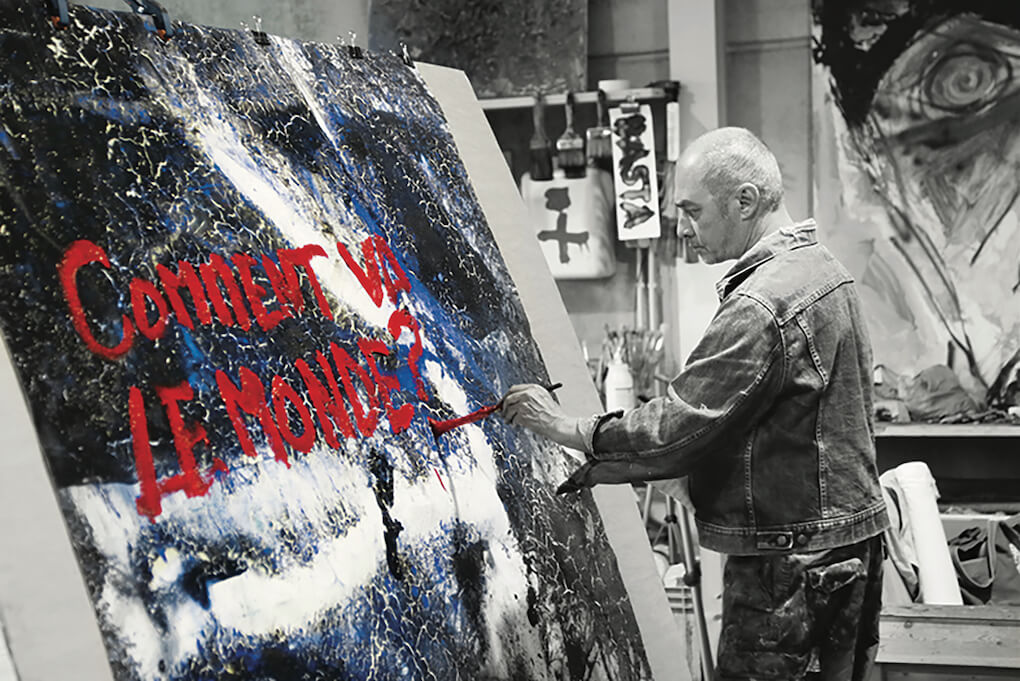
As for what happens next, Philippe Pastor already seems to know. Although he is thinking of returning to the Principality, for the time being “my life as an artist suits me fine. I’m going to stay in the countryside and carry on riding my motorbike.” The best way, he feels, to find the most beautiful viewpoints. And to continue to show what he sees that others don’t.








